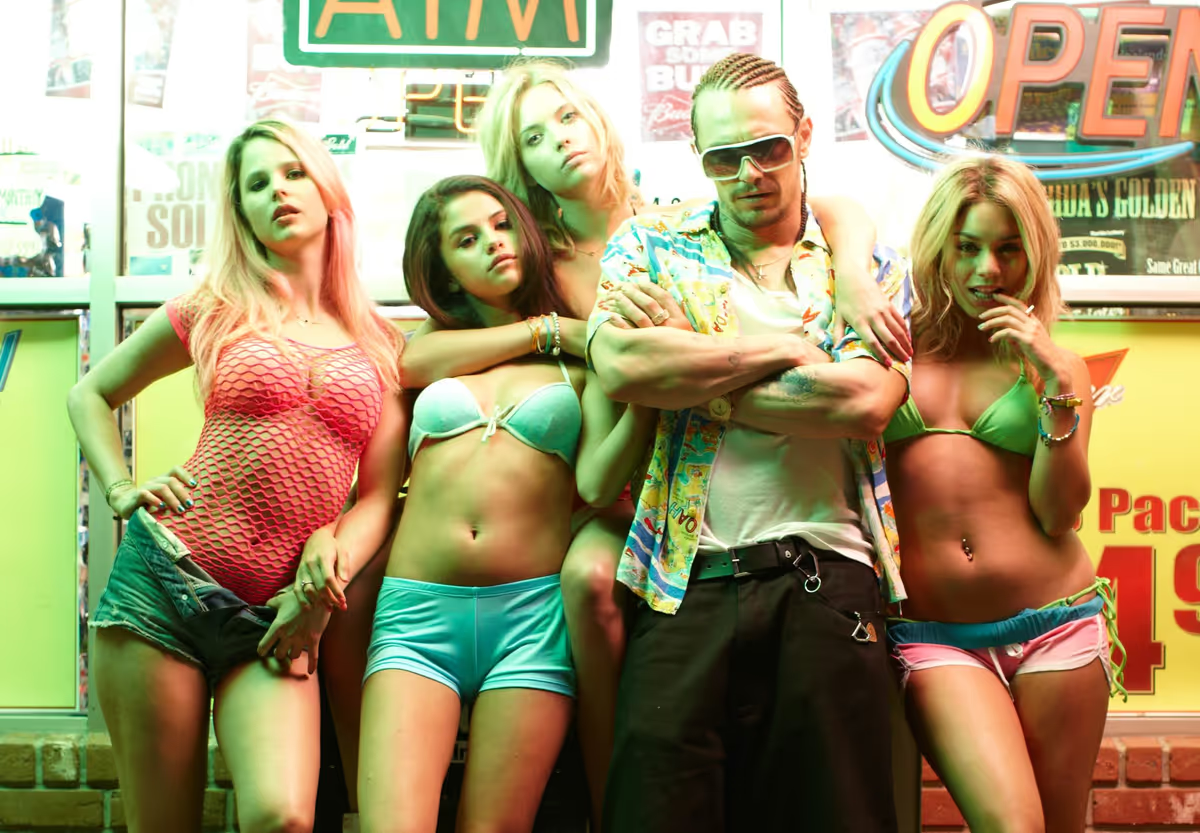The New Cult Canon: ‘Spring Breakers’
Harmony Korine's day-glo provocation sends four restless college girls to a spring break party that never ends.

“Look at all my shit!” — James Franco, Spring Breakers
Back at the 2012 Toronto Film Festival, I attended the world premiere of Harmony Korine’s Spring Breakers, which brought Korine to the stage along with the four actresses who star in the film, including Selena Gomez and Vanessa Hudgens, who’d gotten famous on the Disney Channel but were plainly looking to make a transition into capital-A Adulthood. When the lights went down, the drop in cabin pressure was extraordinary: The same young fans screaming over wholesome teen idols like Gomez and Hudgens were having to sit there with the rest of us, watching a Harmony Korine film. They probably felt a lot like Gomez’s character, a “good girl” type named Faith (subtle!) who gets hijacked by her boozing, sex-crazed, felonious friends for a Gulf Coast misadventure of unimaginable proportions. Not only were they unprepared for what they’d see, but they were unprepared for how they’d see it. For a provocateur like Korine, the whole scene must have felt incredible, echoing John Waters’ famous line about someone throwing up during one of his movies being akin to a standing ovation.
Ever since his screenplay for Larry Clark’s Kids, written as an 18-year-old, scandalized the culture in 1995, Korine has been a difficult figure to pin down, largely because it’s hard to figure out where he stands in relation to his own material. Kids had created such a stir at Miramax Films, which was then owned by the Walt Disney Company, that Harvey and Bob Weinstein had to buy back the film and create a one-and-done distributor just to get it released. And yet this story about teenagers getting smashed on malt liquor and whippets while targeting virgins to deflower had no identifiable perspective, despite the vividness of Korine and Clark’s street scenes and star-making performances from unknowns like Chloë Sevigny and Rosario Dawson. The takeaway from the whole experience felt weirdly conservative, like a hip, NC-17 version of Reefer Madness: There are hopped-up monsters in our midst!
I’ve never once penned a positive review of a Korine film, yet I’ve caught myself writing passages like this one, taken from my original TIFF capsule for Spring Breakers:
Other than the calculated shock of teen pop idols going wild, Spring Breakers is hyperbolically stupid in the usual Korine fashion, relieved only by luscious day-glo visuals (he’s always had a great eye) and James Franco’s demented performance as blinged-out gangsta who’s like a cross between Kevin Federline and William Dafoe’s character in Wild At Heart. (I really need to work on making Korine’s films sound less appealing.)
And so as much as I’ve complained about Korine’s absence of perspective or his gnawing repetition and nihilism or his various attempts at revolutionary anti-cinema, there’s still that issue of making his films seem appealing anyway. Where other filmmakers’ work, even good work, fades in memory, images from Korine’s films have stayed lodged in my memory: The evocative, bombed-out Rust Belt poverty of Gummo; the aggressive home-video cruddiness that complements the domestic drama of his Dogme 95 movie Julian Donkey-Boy; the surprisingly lush colors that surround the celebrity impersonators in Mister Lonely; and even the VHS camcorder artlessness that chronicles the roving idiots of Trash Humpers. His films are generally a grind, but they tend to look better from a few steps back as a repository of moments that offer a truly distinct vision of American subculture.
This post is for paying members only
Sign up now to read the post and get access to the full library of posts for subscribers only.
✦ Sign up